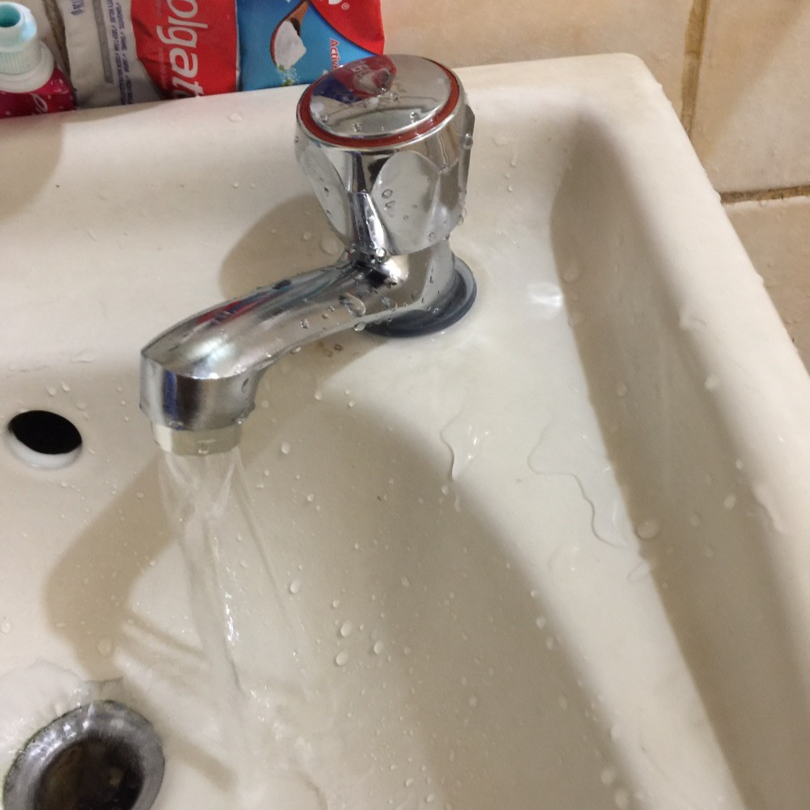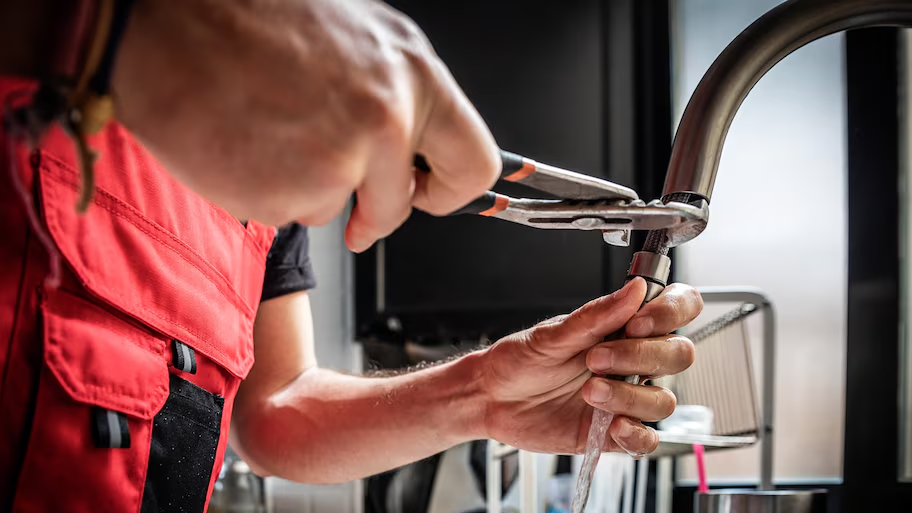Your Relevance of Correcting a Malfunctioning Faucet
Your Relevance of Correcting a Malfunctioning Faucet
Blog Article
The writer is making several good observations on Why It's Important to Fix Leaky Faucets as a whole in this content on the next paragraphs.

Trickling faucets may look like a small trouble, but their effect surpasses simply the inconvenience of the audio. From wasting water to sustaining unneeded financial costs and health dangers, ignoring a leaking tap can result in different repercussions. In this article, we'll delve into why it's critical to resolve this typical household concern promptly and properly.
Waste of Water
Environmental Influence
Dripping taps contribute significantly to water waste. According to the Environmental Protection Agency (EPA), a solitary tap leaking at one drip per secondly can throw away more than 3,000 gallons of water annually. This not just strains water sources yet also impacts ecosystems and wildlife dependent on them.
Financial Expenses
Boosted Water Bills
Past the ecological impact, leaking taps can blow up water expenses substantially. The collected wastage in time equates right into higher energy expenses, which could have been avoided with timely repairs.
Prospective Home Damages
In addition, long term trickling can lead to damage to fixtures and surface areas bordering the tap. Water buildup can create discoloration, deterioration, and even structural issues if left neglected, causing additional repair work prices.
Wellness Worries
Mold and Mold Development
The constant presence of wetness from a leaking tap creates an ideal setting for mold and mildew growth. These fungis not just endanger interior air high quality but also posture wellness dangers, especially for people with breathing problems or allergic reactions.
Waterborne Illness
Stationary water in leaking faucets can come to be a breeding ground for bacteria and various other pathogens, raising the danger of waterborne conditions. Pollutants such as Legionella germs grow in stationary water, potentially bring about major ailments when ingested or inhaled.
DIY vs. Specialist Repair service
Advantages and disadvantages of DIY Repair Service
While some may attempt to fix a trickling faucet themselves, do it yourself repair services feature their own collection of challenges. Without appropriate expertise and tools, DIY attempts can aggravate the issue or cause insufficient repair work, extending the issue.
Advantages of Working With a Professional Plumber
Hiring an expert plumber makes sure that the underlying reason for the leaking faucet is attended to successfully. Plumbers possess the knowledge and devices to identify and repair faucet issues efficiently, saving time and lessening the risk of additional damages.
Step-by-Step Guide to Fixing a Dripping Tap
Tools Required
Prior to attempting to deal with a leaking faucet, collect the necessary devices, including a flexible wrench, screwdrivers, replacement components (such as washers or cartridges), and plumber's tape.
Usual Faucet Issues and Their Solutions
Determine the sort of faucet and the details issue triggering the drip. Usual problems consist of worn-out washing machines, corroded valve seats, or defective O-rings. Describe supplier directions or on the internet tutorials for detailed guidance on repair services.
Preventive Measures
Routine Maintenance Tips
To stop leaking faucets, perform routine upkeep such as cleansing aerators, examining for leakages, and changing damaged components quickly. Furthermore, think about setting up water-saving devices or updating to more efficient fixtures.
Significance of Prompt Fixes
Attending to leaking faucets as quickly as they're noticed stops further water wastage and potential damages, eventually saving both water and cash over time.
Influence On Residential Or Commercial Property Value
Perception of Well-Maintained Building
Keeping a home in good condition, consisting of addressing maintenance issues like trickling faucets, boosts its perceived value and worth among possible buyers or occupants.
Impact on Resale Worth
Residences with properly maintained plumbing fixtures, consisting of taps, command greater resale worths in the real estate market. Addressing dripping faucets can add to a favorable impact throughout property evaluations and negotiations.
Environmental Obligation
Private Contribution to Conservation
Taking responsibility for dealing with trickling taps lines up with wider efforts towards water preservation and environmental sustainability. Every individual's activities jointly make a substantial effect on preserving precious resources.
Sustainable Living Practices
By prioritizing punctual fixings and adopting water-saving habits, people contribute to sustainable living practices that benefit both existing and future generations.
Verdict
Resolving a dripping tap surpasses plain comfort; it's a vital step towards preserving water, lowering economic expenses, and protecting wellness and building. Whether with do it yourself repairs or specialist aid, acting to repair trickling faucets is a tiny yet impactful way to advertise responsible stewardship of sources and contribute to a much healthier, more lasting future.
How to Fix a Dripping or Leaky Faucet
A leaking faucet is one of the most common problems that homeowners encounter, but it being commonplace doesn’t make it any less annoying. The constant drip drip drip of a leaking bathtub faucet, showerhead, or sink tap can disturb your home’s serenity. Left neglected, a dripping faucet can also result in higher water bills and discoloration or mold growth in your sink or plumbing fixtures.
Fortunately, you don’t have to be a trained plumber to know how to stop a dripping faucet. With some basic tools, replacement parts, and a little patience, leaky faucet repair is a breeze. In this article, we’ll explain what causes dripping faucets and how you can fix them.
What Causes a Leaking Faucet?
Kitchen and bathroom faucets come in all manner of designs, but most involve some combination of valves, O-rings, seals, and washers. The O-ring is usually the weakest link, but any one of these pieces can wear down over time. Heat, moisture, temperature fluctuations, minerals, mold, and movement can contribute to warping and corrosion, breaking the watertight seal. This just comes with the territory of being a homeowner. Everything is always subject to wear and tear, and some component parts of your appliances and fixtures need to be replaced on occasion. At least replacement O-rings are cheap!
More rarely, dripping faucets can be a symptom of excessively high water pressure. Were this the case in your home, you would probably notice that the leak is not isolated to one faucet. Water pressure issues are harder to resolve on your own. We recommend contacting a professional plumber if you suspect your water pressure is too high.
How to Fix a Dripping Faucet
Pipe wrench or monkey wrench Allen wrench set Screwdrivers Old towel or rag Shut off the water.
Before you do anything, you need to turn off the water to keep from drenching your kitchen or bathroom. You should find a valve under the sink and against the wall. Once you’ve turned this valve, try turning the faucet on to confirm that the water source has been cut off.
If you can’t locate your local valve for the faucet you’re working on, you can always shut off the water to the house at the main valve. Of course, this will prohibit anyone from using the sinks, showers, or toilets while you’re working on the faucet that’s giving you trouble.
Plug or block the drain.
You’ll be disassembling the faucet and removing some small bits of hardware. Plug the drain with a stopper or rag to avoid the possibility of a small screw falling into your P-trap.
Take apart the faucet assembly.
There are several varieties of kitchen and bathroom faucets, each with its own manner of assembly. For detailed instructions on how to disassemble your faucet, you can refer to the fixture’s manual or contact the manufacturer. If you know whether you have a ball, disc, cartridge, or compression faucet, you can find detailed schematics online.
In general, you need to begin by removing the faucet handles. You might notice a small screw that you’ll need to remove with a screwdriver or Allen wrench. If you don’t see any visible securing hardware, it’s likely hidden under a decorative cap that can be unscrewed or popped off with flathead screwdriver.
Remove each piece methodically, consulting a schematic when necessary. Take notes or arrange the pieces in such a way to make it easier to correctly reassemble the faucet later.
Remove the cartridge.
Once you’ve removed the handles and securing hardware, you should be able to remove the valve cartridge or stem. Some cartridges will slide right out. Other faucet models will require you to loosen a nut with a pipe wrench before you can remove the valve stem.
Examine the exposed hardware.
With the cartridge or stem removed, inspect the component parts. Check the rubber O-rings for wear and tear. Also examine the seat washer for corrosion or other damage. These pieces are usually the responsible parties for a dripping faucet, but it’s worth inspecting the other component parts while you have the faucet disassembled.
Find replacement parts.
Once you’ve identified which faucet component has failed, find an identical replacement. Your local hardware store should have O-rings, seat washers, and other standard components in stock. If you have a luxury or uncommon faucet, you may have to contact the manufacturer for a replacement part.
It’s a good idea to take your old parts with you to the hardware store so you can compare them with the store’s inventory and be sure you’re purchasing the correct replacement.
Reassemble the faucet.
With your new parts in hand, reconstruct the faucet and handles. Don’t be tempted to overtighten screws or nuts. You might think this could create a better seal, but it can instead damage or bend a delicate part of the assembly and create a new problem for you.
Turn on the water and test the faucet.
The only thing left to do is test your work. Unplug the sink, turn the water back on, and try the faucet. Congratulate yourself on a job well done!
https://www.libertyhomeguard.com/how-to-fix-a-dripping-or-leaky-faucet/

Do you appreciate reading up on 4 Common Reasons for a Leaky Faucet? Give feedback further down. We will be glad to listen to your ideas about this blog post. We are looking forward that you visit us again before long. Kindly set aside a second to share this entry if you liked it. I thank you for your readership.
Report this page